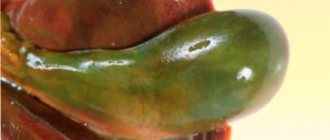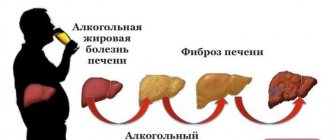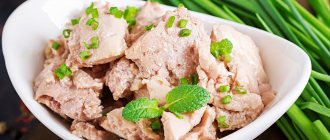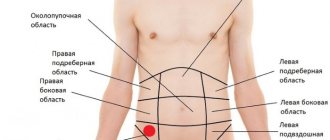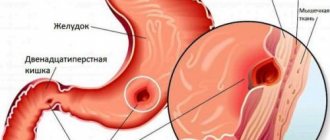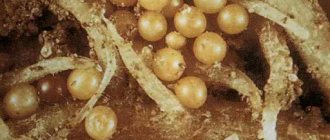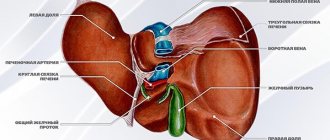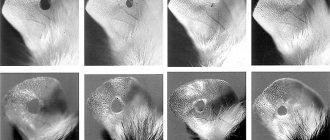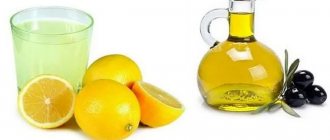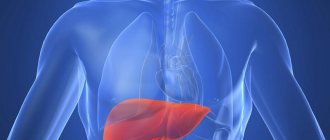How does the disease manifest? Signs of liver problems
- External manifestations
- Internal manifestations
The liver is the largest gland in the human body, so its diseases have a serious impact on overall health. At the same time, it is very sensitive and extremely susceptible to various disorders. Doctors often hear the complaint “I have pain in the liver area.” But can the liver itself hurt and what sensations does a person experience when various diseases appear?
What is important to know about the human liver
| Dimensions | Transverse – 24-28 cm Vertical – 6-8 cm |
| Weight | About 1500 gr |
| Color | Red-brown |
| Consistency | Soft |
| Bile | Up to 2 liters are released (on average 700-800 ml) |
| Liver functions | • digestive (bile formation); • metabolic (participates in the metabolism of proteins, fats and carbohydrates); • barrier (participates in the neutralization of metabolic products and toxins); • homeostatic; • synthetic (participates in the synthesis of certain compounds (urea, glycogen, etc.); • depository (can contain up to 600 ml of blood); • hormonal (participates in the synthesis of biologically active substances). |
| Shares | Right (caudate, square) and left |
| Biochemical indicators | • ASAT (asprartate aminotransferase) • ALAT (alanine aminotransferase) • Gamma-G T PL D G (lactate dehydrogenase) • ALP (alkaline phosphatase) • Bilirubin and fractions • Total protein • Albumin • Cholesterol and fractions • Triglycerides • Coagulogram • Fibrinogen |
What functions does it perform?
The liver is the largest “biochemical laboratory” in the human body. With its participation, the transformation of nutrients occurs, after which they become suitable for utilization by tissues. In addition, it metabolizes toxic substances of internal and exogenous origin, making them inactive. In total, the organ performs about 15 functions and participates in the operation of several systems:
- Protein metabolism
. Responsible for the destruction and restructuring of hematogenous albumins. Due to the enzymatic transformation of amino acids, it creates a reserve in case of insufficient supply of these components from the environment. - Maintaining homeostasis
. Occurs mainly due to the release of heparin, a substance that reduces blood clots and maintains blood fluidity. - Carbohydrate metabolism
. Simple sugars are stored in the liver in the form of glycogen - animal starch. When C6H12O6 levels fall, it is converted to glucose by the action of glucagon. - Barrier function
. It is realized due to the neutralization by hepatocytes of toxic substances entering the liver through the portal vein system. - Excretion
. Deactivated harmful components in the form of metabolites (skatole, phenol, indole), bilirubin and cholesterol are excreted into the gastrointestinal tract and then into the external environment as part of bile. - Fat metabolism
. Takes part in the synthesis and destruction of cholesterol. In addition, without the influence of liver enzymes, the complete breakdown of food lipids entering the intestines is impossible. - Absorption and activation of fat-soluble vitamins
. Absorbed in the small intestine only under the influence of bile acids. Their further activation is realized through phosphorylation in the liver. - Hormonal function
. The formation of many substances occurs with the participation of cholesterol synthesized in heptral structures. Inactivation and destruction of the production of endocrine glands (thyroxine, aldosterone, insulin) also occurs in the liver. - Depot
. The organ accumulates a relatively large volume of blood, animal starch, proteins, and vitamins. In case of malnutrition or severe illness, the liver secretes these substances, thereby ensuring vital functions. - Maintaining body temperature
. The organ exhibits high metabolic activity. Due to this, its temperature significantly exceeds that of other internal structures. Blood passing through the portal vein and liver is heated, which allows it to maintain homeostasis.
In addition to the above, the liver is directly involved in the regulation of intestinal tone. Bile has a stimulating effect on its thin sections. It has a bacteriostatic effect, inhibits the development of pathogenic flora in the gastrointestinal tract, and prevents the predominance of putrefactive processes over fermentation.
Where is the human liver located?
The liver is located under the diaphragm on the right side at the top of the abdominal cavity.
- The upper border is along the midclavicular line in the 4th intercostal space, along the axilla - in the 8th intercostal space and at the level of the 11th vertebra from the back (the position changes by 1-2 cm during breathing). From above, the liver is in contact with the diaphragm, the superior vena cava.
- The left border is 5-7 cm from the midline (the border depends on the constitution of the person and the fullness of the stomach).
- The lower border normally does not extend beyond the edges of the ribs. It comes into contact with the right kidney, adrenal gland, stomach, duodenum, part of the esophagus, and colon.
Location of the liver in the abdominal cavity
What does the human liver look like and work?
To understand how the liver works, try drinking 6 glasses of juice in a minute and accurately name the composition (orange, apple, multifruit). A mistake would be a joke to us. But if the liver makes a mistake and mistakes the toxin for a normal substance – death.
Every minute, 1.5 liters of blood passes through the liver, from which it retains harmful substances for the body.
During the day, up to 800 ml of bile is secreted, which is necessary for normal digestion.
And at night, the liver stores glycogen, which is spent during the day for the needs of the body.
How does the liver work?
Structure: shares, sectors, segments
The gland has a smooth and shiny surface. The largest human organ weighs approximately 1.5 kg. His right lobe is almost 6 times larger than the left. 60%-80% of the organ mass is occupied by functional cells - hepatocytes. Their number can reach up to half a million. Blood circulation in the gland is carried out through hemocapillaries. Bile in a healthy person does not penetrate into the blood, due to transportation only through the bile capillaries.
A characteristic feature of the gland is the absence of nerve endings in it, so it itself does not hurt when inflamed. Unpleasant sensations can be caused by the lining of the organ, which already has nerve endings or nearby organs, on which the enlarged liver puts pressure.
Why can a person’s liver hurt?
The liver itself cannot hurt. This is due to the fact that it does not have nerve receptors. However, the slightest change in volume leads to stretching of the capsule that covers the organ. This leads to the appearance of pain. In addition, pain in the area of the right hypochondrium may indicate pathology of neighboring organs (gall bladder, pancreas, kidney and others).
Stones in the bile duct area
Cholelithiasis (GSD) is a chronic disease, mainly with a genetic predisposition, which is characterized by the formation of stones in the bile ducts.
This disease occurs in 10-15% of the population.
Risk factors for the development of cholelithiasis:
- age over 40 years;
- hereditary burden;
- Gender Female;
- pregnancy;
- taking hormonal medications during menopause;
- excess body weight;
- diabetes;
- cirrhosis of the liver;
- use of certain medications (estrogens, fibrates, antibacterial drugs).
To the point
Viral hepatitis B: how it is contracted and why it is dangerous
Symptoms:
- severe cutting, cramping pain in the area of the right hypochondrium and epigastrium;
- nausea, vomiting that does not bring relief;
- change in heart rate, blood pressure;
- sweating;
- general weakness.
Inflammatory liver diseases
Most often these are hepatitis A, B, C, D, E. Hepatitis is an inflammatory disease of the liver, most often of viral origin.
Transmission routes:
- For hepatitis A and E – water, food, contact and household.
- For B, C, D – upon contact with infected blood, during sexual intercourse.
All hepatitis has approximately similar symptoms and has certain phases of development:
- The incubation period is characterized by the reproduction and spread of the virus in the body, with no symptoms.
- Prodromal (pre-icteric) period - symptoms are nonspecific: nausea, general weakness, loss of appetite, feeling of heaviness, pressure in the right hypochondrium.
- The icteric phase is characterized by the coloring of the skin, mucous membranes, and sclera in a yellow color after 3-10 days. Possible skin itching. On palpation, the liver is enlarged and painful.
- Recovery phase – normalization of indicators occurs within 2-4 weeks.
Gilbert's syndrome
What kind of disease is this and are people with Gilbert's syndrome drafted into the army?
Cirrhosis of the liver
Liver cirrhosis is a process in which the normal structure of the liver is replaced by fibrous structure. The process is irreversible and is the outcome of many chronic liver diseases.
Symptoms:
- increased fatigue, weakness;
- darkening of urine;
- yellowness of the skin, mucous membranes, sclera;
- possible skin itching;
- increase in abdominal volume;
- increased bleeding;
- temperature increase.
Treatment
Most illnesses are treated in a hospital. And many diseases can be treated in simple ways. If this is alcoholic hepatosis, then you should forget about alcohol and choose a diet. In case of toxic poisoning, poisons are removed from the blood through detoxification. Other diseases can be cured by taking antibacterial and antiviral drugs. Surgeon intervention is necessary in the presence of cysts and tumor formations.
And if pain in the gland is due to injury or physical activity, then you should just rest. No treatment as such is required.
Pain relief medications (first aid for liver pain)
The following special drugs are used to help relieve spasm and severe pain in the liver:
- No-shpa
You can take tablets, but it is advisable to administer the medicine intramuscularly, because in this form the drug can relieve suffering in a shorter time than tablets. But we must also forget that No-spa is not used for liver failure.
- Papaverine
Its injections are also used to suppress pain. The direct purpose of the drug is to relax the smooth muscles of the digestive and genitourinary systems. But, again, the use of this drug for liver failure is prohibited.
This drug is administered in various ways.
- Analgin
You cannot take analgin yourself, because... it may mislead your doctor by dulling pain or changing signs of pathology. And also, Analgin additionally loads the exocrine gland.
However, the doctor may prescribe injections of this drug if he considers it necessary.
How to cleanse the liver with folk remedies
Although it was indicated that you cannot self-medicate for pain in the liver, it is still worth noting a couple of points about alternative medicine. You can try liver herbal teas, they are sold in pharmacies and do not require a prescription from a doctor.
For this purpose, we have written a separate article, and we advise you to read it: How to cleanse the liver at home quickly and effectively using folk remedies to remove toxins.
With all this, you should not abuse traditional medicine. Since inflammatory processes can lead to cirrhosis of the liver.
Diet for liver diseases
Let's start with the fact that it is necessary to eliminate bad habits (smoking and alcohol).
Products whose consumption should be minimized:
- Alcohol. Exceptions may include medications (tinctures, decoctions, etc.);
- Butter. You shouldn’t cut it out of your diet at all, because oil has a beneficial effect on some organs;
- Fast food. Absolutely forbidden. Fast food products contain a huge number of components hazardous to health;
- Pork lard, duck and goose meat are recommended to be consumed in small portions;
- Kiwi. You should also reduce your consumption of this fruit;
- Sweet and rich pastries;
- Hot spices and smoked meats.
To prevent liver diseases at home, you should not suddenly change your diet, because this can have a bad effect on the condition of the liver. All changes in diet must be made gradually.
You should drink no more than three liters of fluid per day. It is advised to eat boiled and steamed food. It is also recommended to consume food before 8 pm.
To prevent liver problems, you need to include a number of foods in your diet:
- Wholemeal breads and pastries;
- Vegetable soups with low-fat broth;
- Fresh vegetables and fruits;
- Dairy products with 0% fat content;
- Boiled and stewed fish;
- Freshly squeezed juices, not strong tea and coffee.
Proper nutrition is the key to a healthy liver.
How is the human liver treated?
Non-drug treatment
- ban on drinking alcoholic beverages and smoking;
- moderate physical activity;
- weight loss (if necessary);
- limiting the use of table salt;
- proper and balanced nutrition 4-5 times a day.
Drug treatment
- Hepatoprotectors (Heptral, Ursosan, Hepa-Merz, Essentiale Forte N) are a pharmacological group of drugs that prevent the destruction of cell membranes and stimulate the regeneration of hepatocytes. The main substance is phospholipids. The drugs are taken for a course of 3 months.
show more
- Choleretic drugs and bile preparations in combinations (Ursosan, Ursodez, Odeston, Hofitol) - a group of choleretic drugs increases the formation of bile and accelerates excretion through the biliary tract. Take a course of 2-3 weeks.
show more
- Probiotics (Linex, Hilak Forte, Acipol, Bifiform) are live microorganisms that are necessary for normal microflora. They ensure the removal of toxins from the body, preventing them from entering the liver, which greatly facilitates its work.
show more
Liver resection
Liver resection is the removal of part of the altered liver tissue.
Indications:
- cancer or metastases;
- hemangioma;
- echinococcosis;
- liver cysts;
- liver abscesses;
- liver injury.
Liver transplantation
Liver transplantation is an organ replacement surgery for end-stage liver disease. It is possible to transplant the whole liver or part of the organ.
How to keep your liver healthy at home
There are 10 simple rules that will keep your liver healthy for many years.
- Keep your weight normal.
- Get tested regularly and have an ultrasound scan of your abdomen.
It is recommended to visit a therapist at least once a year and undergo the required minimum tests.
- Take herbal hepatoprotectors.
The use of traditional medicine and dietary supplements can have a beneficial effect on the liver. All you need is a preliminary consultation with a specialist. It is important to be sure that this prevention will not cause harm.
Jaundice in adults
If the skin and mucous membranes turn yellow, the cause usually lies in the liver
- Eat properly and balanced.
- Be physically active.
- Avoid excessive contact with toxic substances.
This includes wearing personal protective equipment when working with insecticides, chemicals and toxins.
- Don't abuse alcohol.
- Do not use illegal substances.
All prohibited substances are harmful to the liver. Even a single dose leads to cell death without the possibility of recovery.
- Do not neglect the rules of safe sexual intercourse.
The risk of contracting viral hepatitis through casual sexual intercourse is very high. A one-time pleasure can be worth several years of treatment.
- Do not self-medicate.
Excessive intake of NSAIDs, antibiotics, and fibrates negatively affects liver function. In addition, hepatocytes can die due to the high concentration of these substances in the body.
Diagnostics
Using laboratory tests of diagnostic procedures, a qualified specialist can identify liver pathology in the early stages of disease development. The treatment system will be determined depending on what caused the pain after diagnostic measures.
Types of diagnostic procedures that a doctor will prescribe for patients with liver pain:
- Laparoscopy;
- Biopsy;
- Ultrasound;
- MRI;
- CT;
- General and biochemical blood test;
- Tests for viral hepatitis and cancer;
- Genetic research;
- Immunological tests.
Treatment is selected individually, based on the results of these tests.
Popular questions and answers
We discussed important issues related to the liver with general practitioner Tatyana Pomerantseva .
What kind of doctor treats a person's liver?
Initially, you need to see a therapist. After collecting complaints, laboratory and instrumental data, the doctor will refer you to more specialized specialists: • hepatologist; • infectious disease specialist; • gastroenterologist. Already with the existing examinations, a highly specialized specialist can immediately prescribe the necessary treatment.
What foods are good for the human liver?
• Products of plant origin (beets, pumpkin, carrots, bell peppers, dried apricots, olive oil); • Products of animal origin (lean meat, stewed or steamed); • Fish (stewed or boiled); • Low-fat dairy products; • Lots of fluids (green tea, freshly squeezed juices, smoothies).
Is it possible to “clean” the liver and how to do it?
The liver is a complex and unique organ that cannot be “cleaned”.
Recovery is possible only if you follow the rules of a healthy lifestyle and timely treatment of diseases. Excessive use of dietary supplements and vitamins only loads the liver, making its recovery impossible. In order for the liver to function at 100% for many years, you should consult a doctor. This will help diagnose diseases in the early stages and begin prevention today. Sources:
- Clinical guidelines “Liver cirrhosis”, 2015.
- Clinical guidelines "ZhKB", 2022.
- Clinical recommendations. Chronic viral hepatitis C (CHC) in adults, 2022.
Prevention
{banner_banstat10}
Primary prevention measures coincide with the requirements of a healthy lifestyle. You should avoid the uncontrolled use of medications, alcohol, fatty, excessively salty, and spicy foods. The amount of water consumed per day is one and a half to two liters. To detect pathology in time, annual medical examinations are recommended as part of medical examination.
Secondary prevention includes taking liver medications as prescribed by your doctor. Diet No. 5 according to Pevzner is indicated, excluding:
- Roast.
- Spicy.
- Canned food.
- Strong broth.
- Mushrooms.
- Fresh bakery.
The diet should consist of the following products:
- Vegetables, cereals.
- Fermented milk drinks.
- Dried bread, soups.
- Lean meat, fish, poultry.
